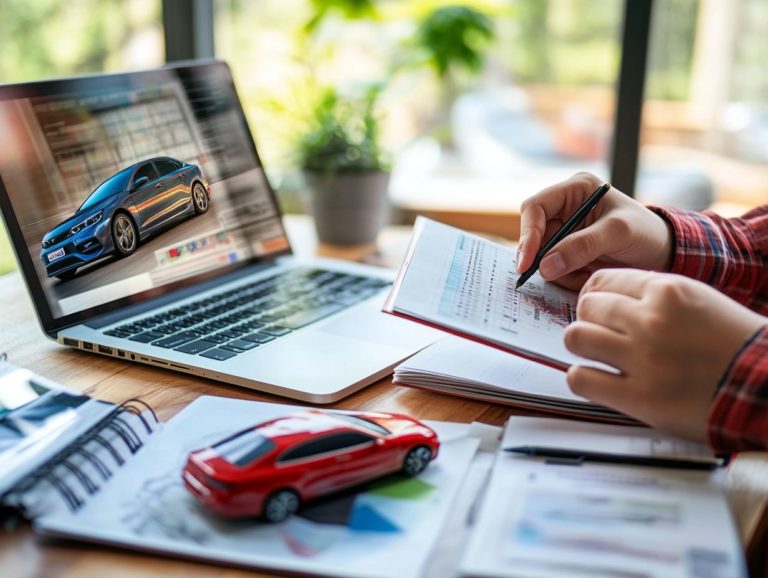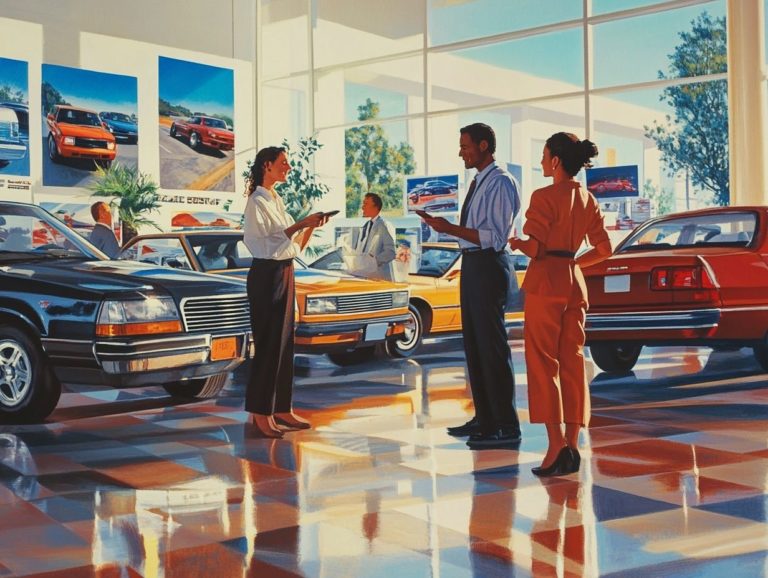How to Handle Trade-Ins When Buying New
Navigating the world of trade-ins can be an incredibly rewarding experience. Especially when you’re ready to upgrade to a new vehicle, your trade-in can significantly impact your next purchase.
Let s dive into everything you need to know about trade-ins! This includes grasping their essence, the benefits they provide, researching your car s value, and mastering the trade-in process.
We will also explore alternatives to trading in your vehicle, ensuring you make the best decision tailored to your situation.
Whether you’re a seasoned buyer or stepping into this realm for the first time, these insights will guide you toward a seamless trade-in experience.
Get ready to maximize your trade-in value today!
Contents
- Key Takeaways:
- Understanding Trade-Ins
- Researching Your Trade-In Value
- The Trade-In Process
- Discover Your Options Beyond Trade-Ins
- Tips for a Smooth Trade-In Experience
- Frequently Asked Questions
- Can I trade in my old car when buying a new one?
- How do trade-ins work when buying a new car?
- What factors determine the value of a trade-in?
- Can I trade in a car that I am still making payments on?
- Should I clean and repair my trade-in car before bringing it to the dealership?
- What if I owe more on my trade-in car than it is worth?
Key Takeaways:
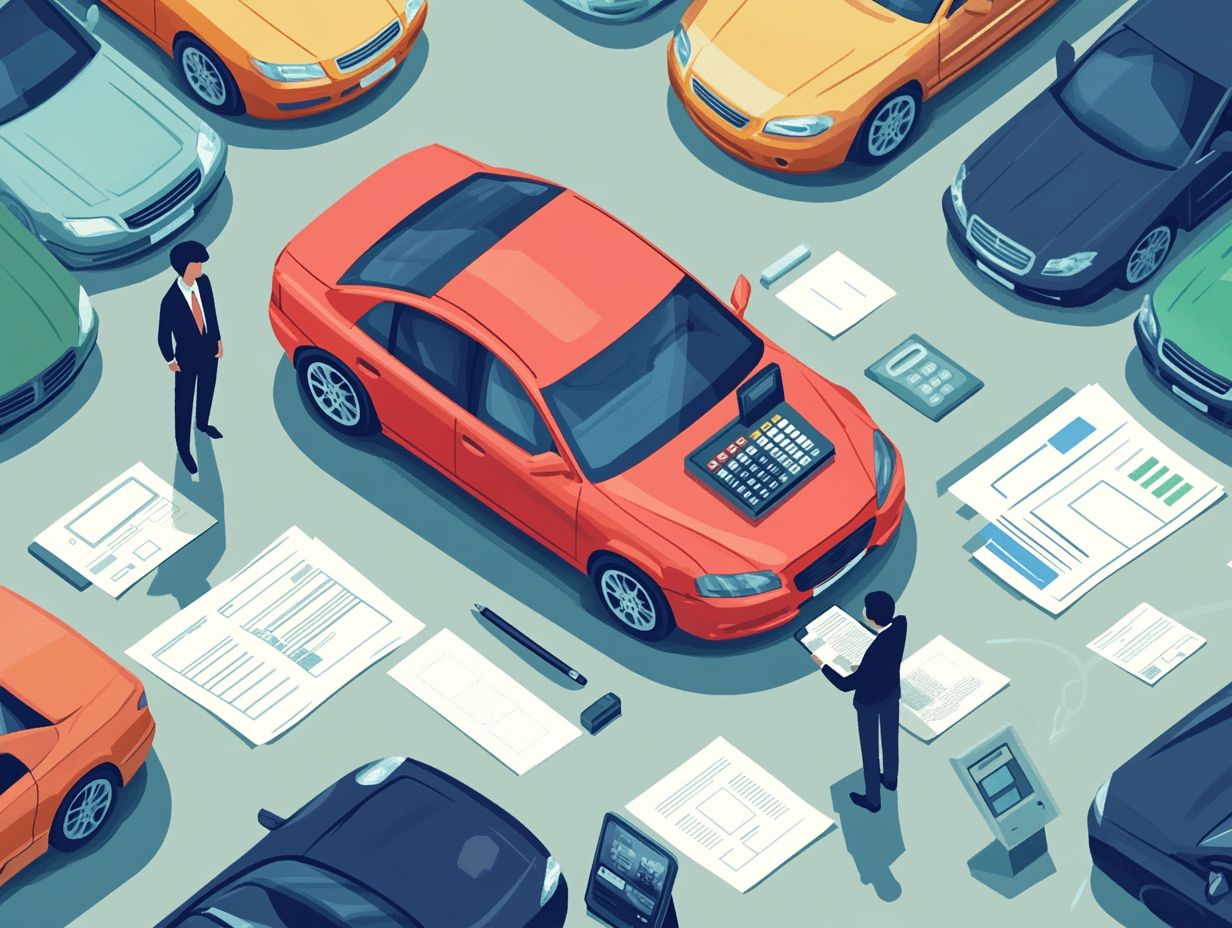
- Understand the concept of trade-ins and the benefits they offer when buying a new car.
- Researching your trade-in value is crucial in determining a fair deal. Consider factors that affect value and utilize online resources to get an accurate estimate.
- Prepare your car for trade-in and be ready to negotiate with the dealership. Alternatively, consider selling your old car yourself or exploring leasing options before making a decision.
Understanding Trade-Ins
Grasping the nuances of trade-ins is essential for anyone considering an upgrade to their vehicle. This involves evaluating the trade-in value, skillfully negotiating the price, and making smart financial decisions informed by the current market conditions.
The process can be intricate, often requiring awareness of how factors like vehicle condition, mileage, and service history affect trade-in potential.
By engaging with automotive experts and leveraging reputable resources such as Kelley Blue Book and Edmunds which help you see how much your car is worth you can significantly enrich your trade-in experience. This will provide invaluable insights that will help you maximize the value of your car trade-in.
What is a Trade-In?
A trade-in is your opportunity to exchange your current vehicle at a dealership. This allows you to receive credit toward the purchase of a new or used car. This process can significantly influence both your overall car value and your trade-in value.
The condition of your vehicle is paramount; clean cars without mechanical issues typically command higher trade-in offers. Factors such as the make, model, age, and mileage of your car can substantially affect its trade-in value. For example, popular models often attract better offers due to heightened market demand.
If your vehicle boasts a clean history and well-documented maintenance records, you may find buyers more inclined to present you with a favorable price. Understanding these factors is essential for anyone looking to maximize their trade-in value.
This transforms the process from a mere exchange into a strategic decision that can lead to significant savings on your next vehicle purchase.
Benefits of Trading In
Trading in your vehicle offers a multitude of advantages, particularly the convenience of negotiating the price of your new car while capitalizing on the value of your old one. This can significantly simplify your financial decisions.
By understanding your trade-in value and consulting with auto experts, you can shop around effectively to secure the best deal. This makes the entire process smoother and more rewarding.
One standout benefit of this approach is the instant credit you receive toward your new car purchase, which can lighten the load of a larger down payment. For instance, if you re a family looking to upgrade from an older sedan to a spacious SUV, you can often accomplish this without digging too deep into your savings.
Trading in a vehicle usually entails less hassle compared to selling it privately. You won’t have to deal with writing ads, managing inquiries, or meeting potential buyers. Many individuals discover that trading simplifies their transition from one vehicle to another, allowing them to drive off with peace of mind and potentially lower monthly payments.
Researching Your Trade-In Value
Researching your trade-in value is a crucial step in the car trade-in process. It gives you the power to gather accurate trade-in quotes and maximize your vehicle s worth.
By utilizing reputable platforms like Kelley Blue Book and Edmunds, you gain reliable benchmarks grounded in market trends, vehicle recalls, and various other factors that impact car value. This ensures you are well-informed before stepping into dealerships.
Factors that Affect Trade-In Value
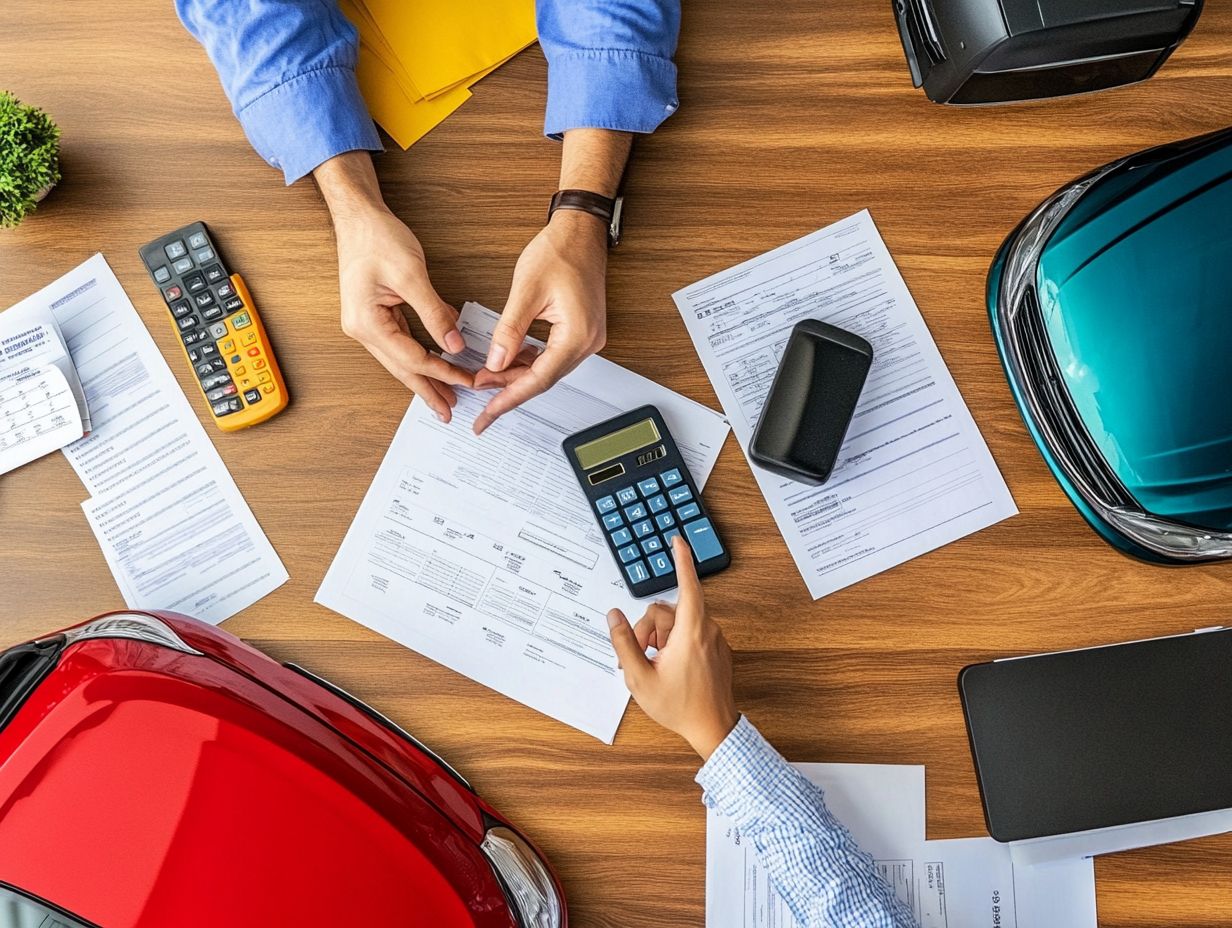
Several factors influence your trade-in value, including the condition of your vehicle, mechanical issues, mileage, and current market demand. Understanding these factors can help you present a more appealing offer to dealerships, boosting your trade-in potential.
A vehicle that shows signs of wear and tear or has noticeable cosmetic damage may receive a lower valuation compared to one that has been meticulously maintained and kept in pristine condition. Mechanical issues significantly impact trade-in offers; a car with engine troubles or transmission problems is simply less appealing.
Mileage is another critical aspect. Typically, lower mileage suggests less usage, which is attractive to potential buyers. Current market demand can fluctuate due to seasonal trends, the popularity of specific models, and economic conditions, all of which further influence your trade-in value.
Where to Find Trade-In Values
To find accurate trade-in values, you can turn to a variety of trusted resources like Kelley Blue Book, Edmunds, Carvana, and CarMax. These platforms provide reliable estimations based on comprehensive data analysis, allowing you to compare trade-in offers and make informed decisions when negotiating with dealerships.
Kelley Blue Book is a trusted name in the industry, leveraging historical sales data and expert insights to deliver a solid initial value estimate. Edmunds takes a more dynamic approach, integrating live market data and user experiences to offer tailored suggestions based on your vehicle’s condition and location.
If you re looking for simplicity, Carvana has you covered with immediate online quotes and direct buying options that allow you to bypass the dealership experience. Meanwhile, CarMax stands out with its no-haggle pricing policy, ensuring transparency in the trade-in process.
Utilizing these diverse methodologies allows you to confidently navigate the complexities of vehicle trade-in valuations.
The Trade-In Process
The trade-in process starts with a thorough inspection of your current vehicle’s condition to determine its trade-in value. This involves gathering quotes, possibly making repairs, and negotiating the price with various dealerships.
Grasping the trade-in offer you ll receive gives you the power to make informed financial decisions as you transition to your next car.
Steps to Take Before Trading In
Before you trade in your vehicle, it s essential to take a few key steps to ensure you get the best possible trade-in value. This means preparing your car, assessing its condition, and making any necessary repairs. Shopping around for trade-in quotes can further strengthen your negotiating position when you walk into a dealership.
- Start by giving your vehicle a thorough cleaning, both inside and out. A well-presented car creates a positive first impression and can significantly impact the price you re offered.
- Next, gather all your maintenance records and receipts to show that you ve taken good care of the vehicle this can instill confidence in potential buyers.
- Researching the current market value of similar models will arm you with crucial information to enhance your negotiating stance.
- Don t overlook the minor details; addressing small issues like replacing burnt-out bulbs or ensuring all fluids are topped off can make a noticeable difference in how your car is perceived. Taking these steps can lead to an amazing trade-in experience!
Start preparing your vehicle today to maximize your trade-in value!
Negotiating the Trade-In
Negotiating the trade-in is an important part of the car trade-in process that can significantly influence your financial outcomes. It enables you to secure a favorable offer. Engaging with auto experts and being prepared to shop around gives you the power to negotiate the price with confidence.
Understanding your vehicle’s value is an essential first step. Utilizing online appraisal tools gives you a solid baseline for what you might expect. Presenting your car in the best possible light through thorough cleaning and minor repairs can enhance its perceived value during discussions.
Knowing the market trends and the demand for your specific vehicle type provides you with a clear benefit when evaluating offers. Don t hesitate to walk away if an offer falls short of your expectations. This strategy can often prompt dealers to reconsider and present a more competitive deal.
Discover Your Options Beyond Trade-Ins
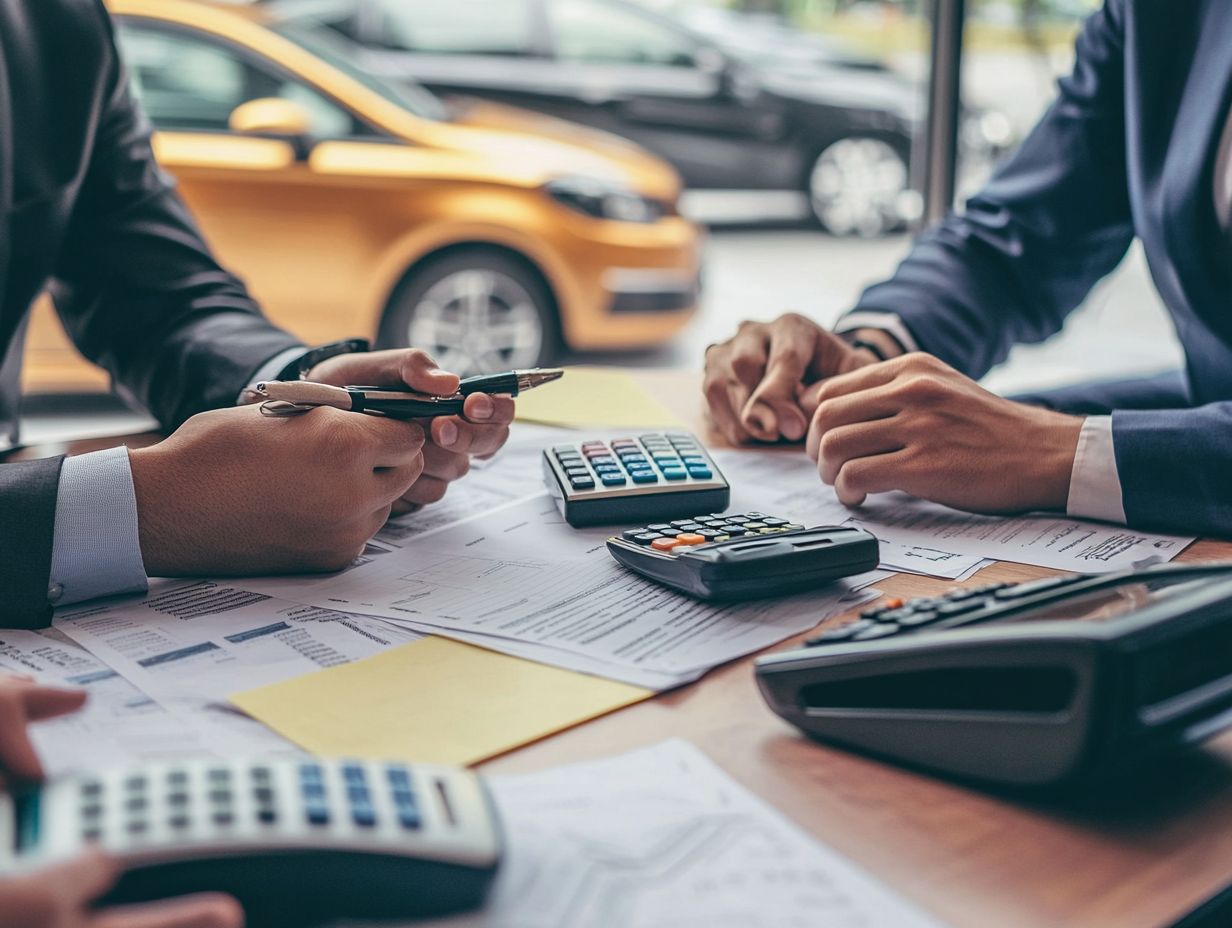
Exploring alternatives to trading in your vehicle can unveil new opportunities for maximizing its value. Whether you choose to sell your old car privately or delve into the leasing versus buying debate, each option presents unique financial considerations, influenced by the condition of your vehicle and current market trends.
Selling Your Old Car Yourself
Selling your old car on your own can often net you a better return than trading it in. Private sales generally offer a more favorable financial outcome compared to dealership trade-in values. This process calls for diligence in marketing and negotiating.
Start by researching your car’s market value through online listings. This knowledge will give you a competitive edge.
Next, it’s crucial to gather and maintain all relevant documents, such as the title and maintenance records. This helps establish trust with buyers.
Taking high-quality photos and crafting a detailed description can significantly enhance your car’s appeal. While the allure of a higher selling price is enticing, remain mindful of potential risks, such as interacting with untrustworthy buyers or navigating the complexities of paperwork.
Balancing these factors can lead to a successful sale and maximize your financial returns!
Leasing vs. Buying
When weighing the options of leasing versus buying, grasp how each choice influences your car’s value and trade-in potential, along with the broader financial implications of vehicle ownership.
Leasing allows you to enjoy the perks of driving a newer vehicle equipped with the latest features every few years. However, it often comes with mileage limits and may include extra charges for wear and tear.
When you purchase a car, once the loan is settled, the vehicle is entirely yours. This ownership grants you the freedom to sell or trade it in whenever you choose. It enables you to sidestep the depreciation pitfalls the decrease in value over time that often ensnare leaseholders.
By carefully evaluating these options, you can determine which path aligns best with your financial goals and lifestyle preferences.
Tips for a Smooth Trade-In Experience
Ensuring a smooth trade-in experience requires meticulous preparation and a clear understanding of the car trade-in process. This includes assessing your vehicle’s condition and learning how to negotiate used car trade-ins to be well-equipped to negotiate the price effectively.
By following essential tips, you can significantly enhance your chances of receiving a favorable trade-in offer. Enjoy a seamless transition to your new vehicle! Act fast to seize the best opportunities!
Preparing Your Car for Trade-In
Preparing your car for trade-in is an essential step in maximizing its value. Make sure your vehicle is in top condition. Clean the interior and exterior thoroughly, and make any necessary repairs. A well-presented car can significantly enhance the trade-in offer you receive from dealerships.
By taking these steps, you not only increase the likelihood of a favorable evaluation, but also ensure a smoother transition for yourself. Begin by giving your vehicle a comprehensive wash. Address any visible scratches or dents, and vacuum the interiors to create a pristine atmosphere. Don t overlook checking the fluid levels, tire pressure, and the functionality of all lights and signals; minor issues can lead to decreased offers.
Gather essential documents like the title, registration, and maintenance records. This shows dealerships you ve cared for the vehicle, further strengthening your position during negotiations.
Dealing with Dealerships
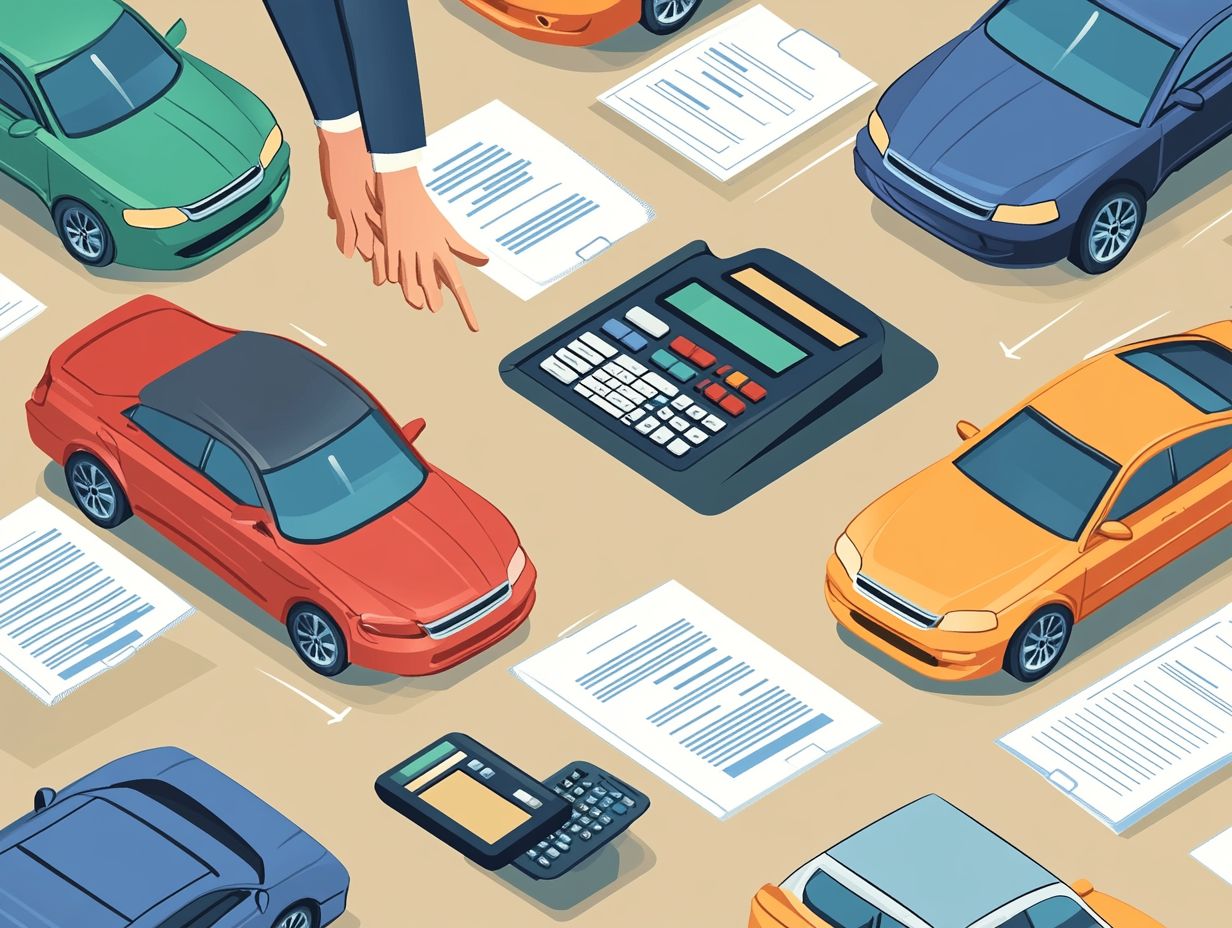
Navigating the trade-in process can be challenging, but it doesn’t have to be! Knowing how to trade in your old car effectively and evaluate offers can transform your experience into something far more favorable. Consult with auto experts and be ready to explore various options; this gives you the power to make informed decisions when engaging with dealers.
By gathering information on your vehicle s current market value and staying aware of trade-in prices for similar models, you create a solid foundation for a more successful negotiation. It’s crucial to enter these discussions with a clear understanding of your objectives, whether that s securing a specific price or ensuring a seamless transition from your old vehicle to a new one.
Building rapport with the sales team can often lead to more attractive offers, as they tend to be more accommodating to buyers they trust and respect. Keep in mind that patience and persistence are essential; being willing to walk away can sometimes prompt better terms.
Frequently Asked Questions
Got questions? Here are some of the most common inquiries about trade-ins:
Can I trade in my old car when buying a new one?
Yes, most car dealerships accept trade-ins when you are purchasing a new vehicle. It can help lower the total cost of your new car.
How do trade-ins work when buying a new car?
The dealership will appraise your current car and deduct its value from the price of the new car. You can also negotiate the trade-in value if you feel it is too low.
What factors determine the value of a trade-in?
The age, mileage, and condition of your car play a major role in determining its trade-in value. The make and model can also affect the value, as well as current market demand.
Can I trade in a car that I am still making payments on?
Yes, you can trade in a car even if you are still paying off a loan. The dealership will handle paying off the remaining balance and apply any equity towards your new car purchase.
Should I clean and repair my trade-in car before bringing it to the dealership?
Yes, it is recommended to clean and make any necessary repairs to your trade-in car before bringing it in. This can help increase the value and make a good impression on the dealership.
What if I owe more on my trade-in car than it is worth?
If you are “upside-down” on your car loan, meaning you owe more than the car is worth, you may still be able to trade it in. However, you will need to pay the remaining balance before purchasing a new car or roll it into the new loan.

